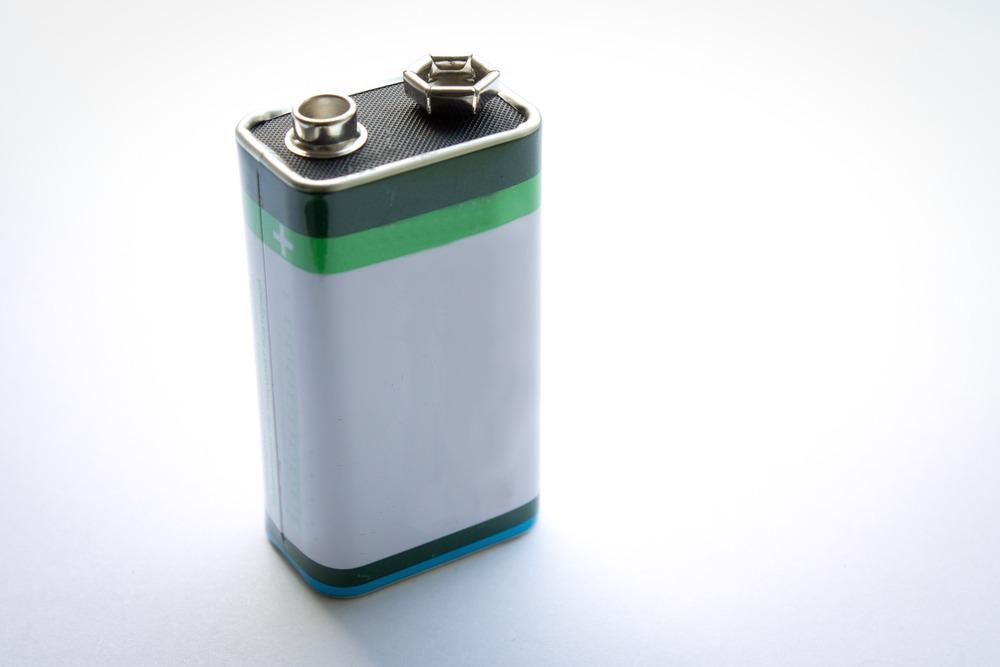.jpg) By Susha Cheriyedath, M.Sc.Reviewed by Skyla BailyNov 26 2021
By Susha Cheriyedath, M.Sc.Reviewed by Skyla BailyNov 26 2021An article published in the journal Materials Today Nano demonstrated a novel method to utilize diamond wire saw silicon power (DWSSP) produced during the manufacturing of solar cells. The team illustrated a method for the conversion of DWSSP into a composite that demonstrated excellent cycling performance and retained discharge capacity and is ideal for use in lithium-ion anodes.

Study: Nano-silver Actuated High-performance Porous Silicon Anode from Recycling of Silicon Waste. Image Credit: CyrilLutz/Shutterstock.com
Challenges in Recycling DWSSP
Silicon is a primary material used in the manufacture of solar photovoltaic cells and around 35% of silicon is lost during the wafer cutting process. The need for better fuels has led to the development of the renewable photovoltaic industry. However, a huge amount of DWSSP (~300,000 t/a) is produced during solar cell manufacturing and it needs to be recycled and utilized to protect the environment.
Significant volume changes over 300% during lithiation/delithiation leads to cracking and pulverization of silicon, continuous solid electrolyte interphase (SEI) film formation, and loss of contacts between anodes and current collector. This causes a rapid decrease in capacity, low initial Coulombic efficiency (CE), and poor cycling stability.
To overcome these limitations, nanoscale Si particles are used as anode materials in lithium-ion batteries. Nanostructured Si anodes show improved electrochemical performance due to their porosity which acts as a buffer to withstand stress during lithiation. In this study, nano-porous silicon composites from silicon waste were used to prepare lithium-ion anodes that showed high capacity and stable cycling performance.
What did the Researchers do?
In this work, the researchers chemically crushed DWSSP with nano-copper-assisted etching. Porous silicon/Ag composites (PSi/Ag) were then prepared by nano-silver-assisted etching with dopamine as an organic surface coating.
More on Batteries: Lithium-Sulfur Batteries: Use of Graphene Oxide-Wrapped Nanosheets for Polysulfides Adsorption
The first step was to perform copper-assisted chemical etching to eliminate the edges of bare Si. This was followed by treatment with HNO3 solution to remove Cu nanoparticles and obtain Si nanoflakes. The Si nanoflakes were then immersed into a mixture of AgNO3, HF, and C2H5OH and were stirred for 2 hours in the dark to obtain the porous Si/Ag composites. This composite was further treated with tris-buffer solution and dopamine hydrochloride, and then carbonized in Ar at 900° for 6 h to obtain the final Si/Ag/C composites.
Characterization
X-ray photoelectron spectroscopy (XPS) was used to analyze the surface states of Si/Ag composites and the Brunauer-Emmett-Teller (BET) method was used to measure the specific sample surface area and pore size distribution. Field emission scanning electron microscopy (FE-SEM) and transmission electron microscopy (TEM) were used for elemental and morphological analysis. Batteries with different current densities in the voltage range of 2.0 ~ 0.01 V were tested using the electrochemical test system. Cyclic-voltammetry curves and electrochemical impedance spectroscopy were performed on an electrochemical workstation.
What did they Find?
The FTIR spectra of Si/Ag and Si/Ag/C showed characteristic Si-OH peaks at 782 cm-1 and 2810-3000 cm-1, indicating the presence of SiO2 on the Si/Ag/C surface. The XRF test results showed a silver content was 3.39% in the Si/Ag composite. TGA test showed a 12.27% carbon content in Si/Ag/C.
BET gas adsorption measurements investigated the porosity of bare Si, porous Si, and Si/Ag/C. The pore size distribution in Si/Ag/C composites is slightly wider than that in porous Si samples, which can be attributed to the presence of localized graphene structures and heterogeneous interfaces between the silver nanoparticles and the carbon matrix. Bare Si, porous Si, and Si/Ag/C nanohybrids had specific surface areas of 21.79, 49.81, and 148.42 m2g−1, respectively.
The high-resolution XPS spectrum of Si2p showed three peaks - sharp peaks at 101.5 eV and 103.5 eV corresponding to Si2p1/2 and Si2p3/2 of silicon and a characteristic peak at 100.8 eV corresponding to Si-O-Si of SiOx. These results are consistent with the FTIR spectra and further confirm the presence of SiOx on the silicon surface and the successful synthesis of Si/Ag/C composites.
Conclusions
The study demonstrated a novel process to fabricate composite materials to facilitate stress concentration release. The multi-layer cladding was used to limit volume expansion, improve electrical conductivity, and enhance electrode stability. While stress removal solves the particle pulverization problem, the porous structure acts as a buffer for volume expansion. Silver nanoparticles improve the electrical conductivity of the composites and promote transmission and diffusion of lithium-ions in the electrode.
The as-prepared Si/Ag/C electrode showed good electrochemical performance, which confirms that this is an effective method to utilize DWSSP to fabricate porous silicon nanocomposites for use in next-generation lithium-ion batteries. This study presents a method for utilization of abundant Si waste generated in the solar industry and offers an effective method to prepare porous materials for energy storage.
Reference
Zhang, Z., Xi, F., Ma, Q., Wan, X., Li, S., Ma, W., Chen, X., Chen, Z., Deng, R., Ji, J. and Fan, H.J., 2021. Nano-silver Actuated High-performance Porous Silicon Anode from Recycling of Silicon Waste. Materials Today Nano, p.100162. DOI: https://www.sciencedirect.com/science/article/pii/S2588842021000547?via%3Dihub
Disclaimer: The views expressed here are those of the author expressed in their private capacity and do not necessarily represent the views of AZoM.com Limited T/A AZoNetwork the owner and operator of this website. This disclaimer forms part of the Terms and conditions of use of this website.